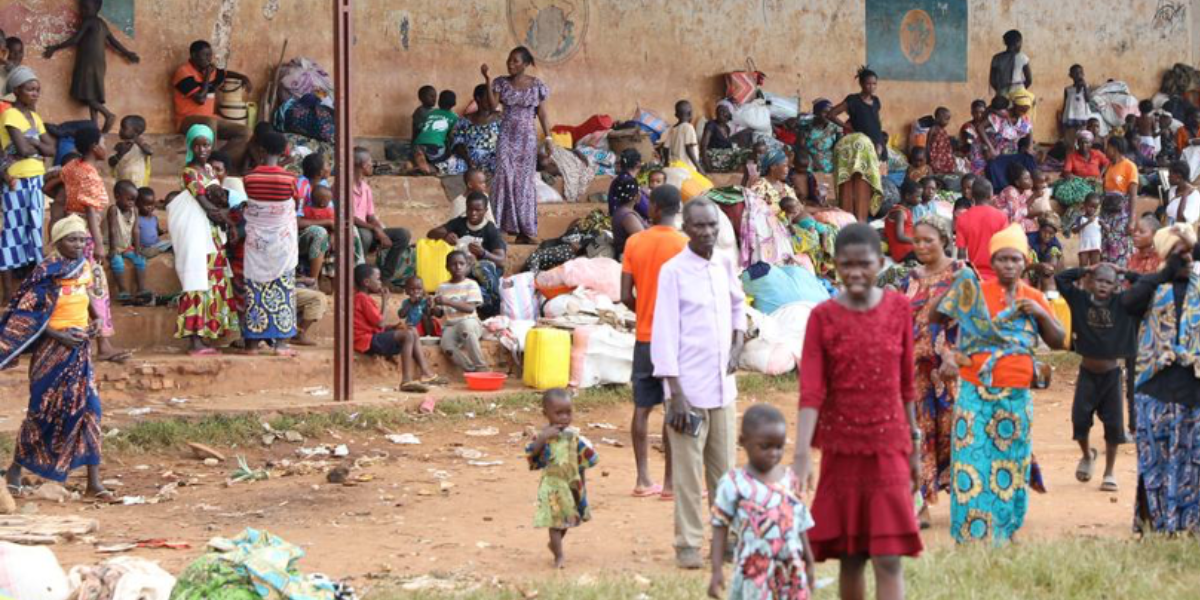The longest interstate highway in the United States is Interstate 90. The highway runs from Seattle to Boston and neatly divides the state of New York. In the middle of that state’s span, just off interchange 34, sits the village of Canastota, NY, which has a population of 4,556.
January 12, 2020, will forever be etched in the memories of the residents of Batangas province in the Philippines. Taal Volcano, a picturesque natural wonder surrounded by a serene lake and a favorite tourist attraction, transformed from a tranquil beauty into a source of unimaginable destruction. The volcano, known for its deceptive calm, had been silently building pressure. And on that fateful day, it erupted with brutal force.
Since the start of 2025, more than 70,000 people have fled the Democratic Republic of Congo (DRC) into Burundi to escape ongoing conflict.
“Some have traveled from as far as Goma, hundreds of kilometers to the north—another devastating example of repeated displacement in the East Africa region,” said a Nazarene Compassionate Ministries leader in Burundi.

Kelly (32), a single mother of three who lives in a community in the Peruvian jungle, used to wake up at dawn to work her small banana crop—her only source of livelihood. One morning earlier this year, after torrential rains, the river swept everything away: her wooden hut, her tools, her ready-to-harvest bananas, even family photos.
"The water rose to my waist. I grabbed my children and ran to higher ground. When we returned, only mud remained ... and silence," she recalled.
Daily life in Haiti is deeply challenging. Recent stats show that ongoing insecurity and gang violence have forced hundreds of thousands of Haitians to flee their homes, pushing the number of internally displaced people inside the country to nearly 1.3 million, the highest ever recorded. Many end up in crowded, makeshift sites without easy access to enough food and water, health care, or functioning sanitation systems. Hunger is commonplace. Education for children and work for adults have been severely disrupted for much of the population.
When the devastating hurricanes Helene and Milton struck the southeastern United States in the fall of 2024, local churches became beacons of hope and stability, providing important community resources.
In January of 2025, large and devastating wildfires swept through parts of Southern California. The two largest blazes, the Palisades and Eaton fires, collectively burned 37,728 acres and destroyed more than 16,000 homes and other buildings. Close to 200,000 people were evacuated from their homes. The Eaton fire directly impacted the cities of Pasadena and Altadena, home to several Nazarene churches. Out of the ashes, stories of hope and healing continue to emerge from communities of faith.
This January, young Nazarene leaders from around the world gathered in Orlando and Lake Placid, Florida, for the Nazarene Youth International Third Wave conference. Together, these young men and women experienced worship, learning, and service opportunities. Nazarene Compassionate Ministries joined the Third Wave event for a day of training and ministry.
“My family and I have faced very difficult times during the long crisis.”
Magalie, a mother of five, had just received a food parcel to help stave off the hunger that was growing in her home, after her crops and animals were lost in a flood—just one of many difficulties her family has faced in recent years. Though she was describing her own experience, Magalie’s words could have easily been uttered by many of her neighbors in this Haitian community.
“After losing my home to the wildfire, I found myself in a very distressing situation."
Carolina, 43, was devastated by the fires that raged through Chile during the first week of February, 2024, following days of extreme heat.
“I felt like I had lost everything and didn't know how to move on," she shared.
More than 160 fires burned at once, and the disaster left Carolina and at least 1,600 other people homeless in and near the city of Viña del Mar. A total of 130 people lost their lives in the blazes that have now been linked to arson.
Pagination
- Page 1
- Next page
